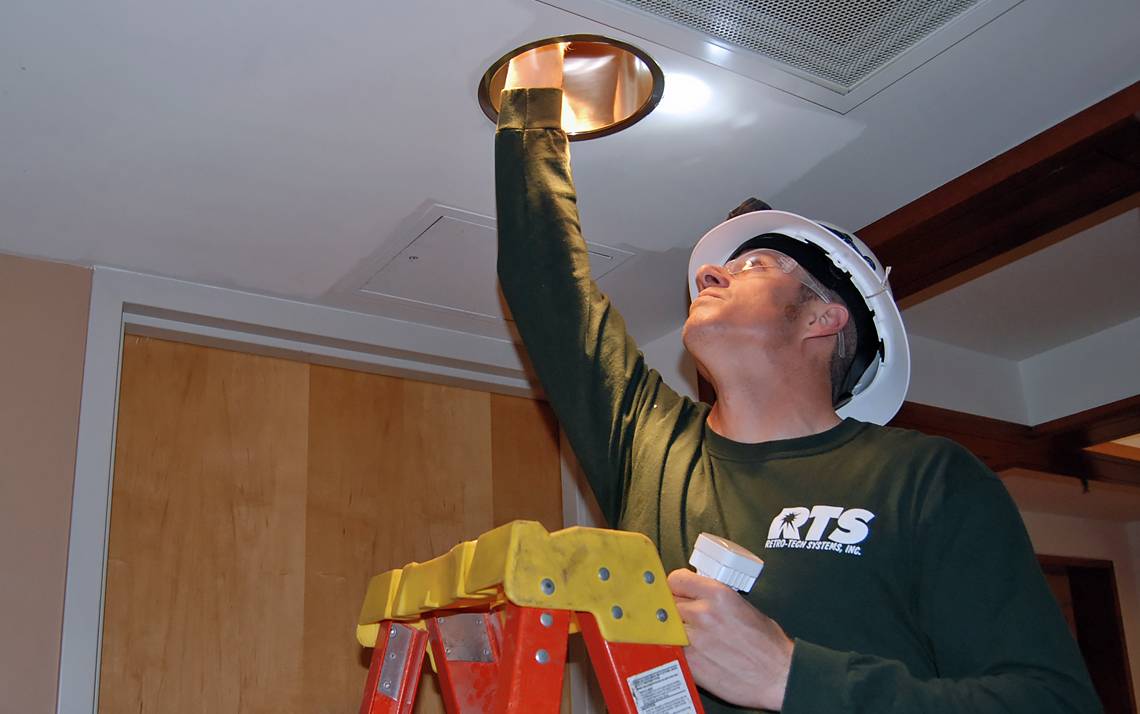Flipping the Switch on LED Lights
Duke is using LED lights in 14 campus buildings, creating energy savings

The majority of people who pass through the mailroom and first-floor conference room in the Biological Sciences Building haven’t noticed anything different with the lights.
“You flip the switch and the lights come on,” said Randy Smith, manager of the Biology Department. “And they look like lights.”
That’s the point. The difference between the old fluorescent lights and the LED lights that were recently put in their place isn’t supposed to be noticeable. But when viewed from a sustainability standpoint, the advantages of the new lights are hard to miss.
“This is exactly the kind of sustainability project we like to do,” said Duke Facilities Management Energy Manager Casey Collins. “It wins in a lot of ways.”
In recent years, LED lighting technology has made great strides in reliability, light quality and ease of installation. Meanwhile, the price of LED lights has dropped significantly.
For the past five years, new buildings on Duke’s campus have been constructed with LEDs. And starting this spring, Duke will begin replacing old fluorescent or incandescent lights in 14 campus buildings – representing about 1.35 million square feet of building space – with more efficient LEDs.
The project began last summer with test batches of LED lights installed in Hudson Hall. Later, a detailed audit of the lighting needs of campus buildings resulted in a plan to retrofit 14 facilities with LEDs during the first half of this year.
“LED Lighting has been growing for the past decade in terms of the product options that are out there,” Collins said. “It’s really been a silent revolution in the building technology world.”
The change will cut lighting system energy use in the buildings by around 52 percent. The amount of energy saved is roughly equivalent to the amount used to power the Duke Marine Lab for a year.
The project will cost roughly $2.2 million but is expected to pay for itself in energy savings in four years. The 14 buildings getting LED lights this spring mark the first phase in a process that is expected to convert most of campus to LEDs in the coming years.
“We didn’t want to rush, we wanted to try out the technology so we could find what worked for us,” said Energy Engineer Abhi Bathula.
The LED lights installed last month in the Biological Sciences Building were part of a trial phase to see which lights work best in the space. The building will be fully converted to LEDs soon.
By then, the Biology Department’s Randy Smith expects his colleagues to notice and approve of both the new lights and the energy savings they will create.
“We’re a very environmentally sensitive department, so something like this gets lots of good support,” Smith said. “We think it’s a good idea. Most of us have probably already done it in our homes.”
Learn more about Duke's Climate Commitment at climate.duke.edu